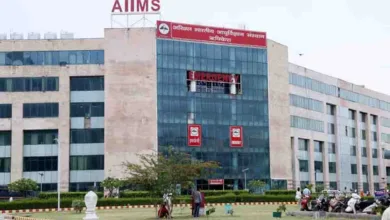Monsoon marked by uneven rains, scientists attribute changes to climate change

Sunday, 20 October 2024 | PNS | DEHRADUN
Uttarakhand witnessed normal monsoon rains for 2024 to the tune of 110 per cent of the long period average. From June 1 to September 30, the State recorded 1273.4 millimetres of rain against the normal of 1162.7 millimetres. However, the rain has been uneven as nine of the 13 districts recorded normal rains, two received large excess rainfall, one recorded excess and one deficit. Bageshwar district recorded the highest rainfall during the season followed by Chamoli in the same time span. On the other hand, Pauri district recorded the highest deficit rainfall in the monsoon.
According to data from the Indian Meteorological Department, Bageshwar received 223 per cent above normal rain while Chamoli received 74 per cent above normal rain. Apart from these two districts which recorded large excess, Dehradun recorded excess rainfall with 21 per cent above normal rain. Pauri recorded a deficit of 39 per cent below normal while Almora, Champawat, Tehri, Haridwar, Nainital, Pithoragarh, Rudraprayag, Udham Singh Nagar and Uttarkashi recorded normal rainfall.
Experts opine that monsoon performance over the recent past years has shown an increasing annual variability. Scientists attribute the rise in extreme weather events such as increasing monsoon variability, to global warming. Former director general of IMD KJ Ramesh said, “During the last five-six years, weather systems have been travelling through central India, which used to follow the northward trend. Changes of rainfall patterns are driven by global warming and at the same time driven by El Nino, IOD (Indian Ocean Dipole) and MJO (Madden Julian Oscillation). High intensity and short duration precipitation is driven by climate change. Longevity of monsoon systems has increased because of back to back systems. These systems led to the saturation of soil moisture. When systems move over such areas, soil provides the same momentum as it is over the ocean. It may not be of the same magnitude but it does increase the shelf life of the weather system.”
Research scientist at the National Centre for Atmospheric Science, University or Reading, UK, Akshay Deoras said, “The general link with climate change is that when conditions are favourable for rain, the chance of getting intense rain would be more than it was several years before. As the planet warms, the monsoon would get more and more variable. Longer dry spells and periods of more intense rainfall. Huge variation was seen in the rainfall among different districts.”






